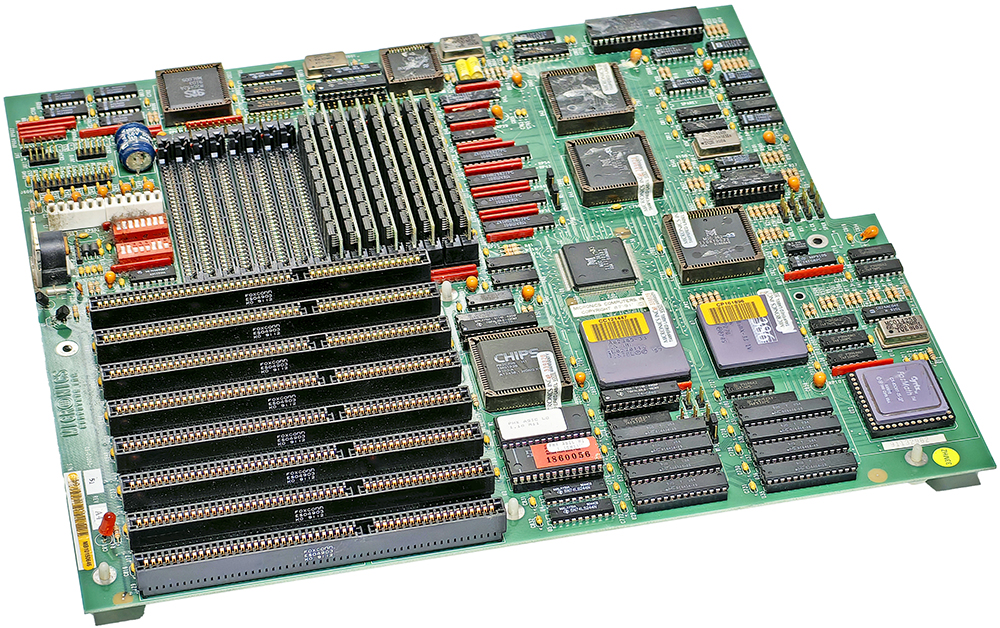The PC386 motherboard, developed by various manufacturers in the late 1980s and early 1990s, was designed to support Intel’s 386 microprocessor (introduced in 1985). It marked a significant leap in computing power, transitioning from 16-bit to 32-bit architecture, enabling faster processing, multitasking, and improved memory management. The PC386 motherboards were widely used in personal computers for business, scientific, and home applications. They supported early versions of operating systems like MS-DOS and Windows 3.0, as well as more advanced software and programming tools of the era. The historical significance of the PC386 lies in its role in ushering in modern computing capabilities. The 386-based systems allowed for the development of more powerful applications and laid the groundwork for the widespread adoption of graphical user interfaces (GUIs) and networked computing, becoming a milestone in the evolution of personal and professional computing.
Creator: Micronics Computers Inc., 1989
Source: Mathematical Institute SASA
Text prepared by Marija Šegan-Radonjić, Maja Novaković
Photo by Dragan Aćimović
